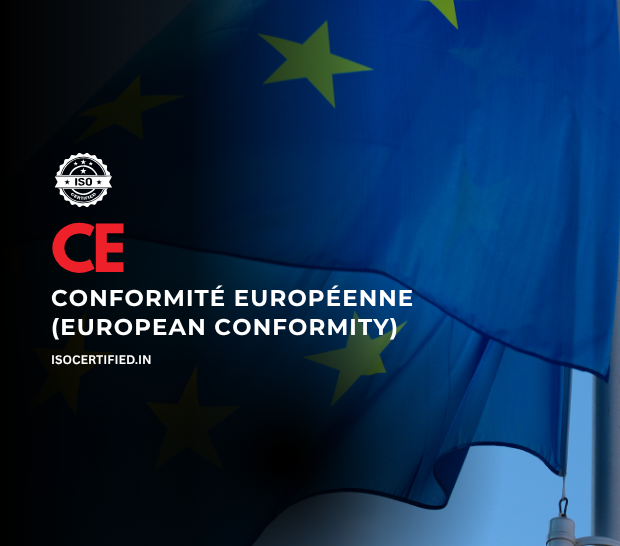- Globally Recognized Certification
CE - Conformité Européenne (European Conformity)
CE Marking certification confirms that products meet all applicable European Union health, safety, and environmental protection requirements before being sold in European Economic Area markets. This mandatory marking demonstrates manufacturer compliance with relevant EU directives and regulations governing product standards.
Request A Free Quote
What is CE – Conformité Européenne (European Conformity) Certification
CE Certification is a mandatory conformity marking that indicates products comply with all applicable EU legislation covering safety, health, and environmental protection standards. This certification applies to wide-ranging product categories including machinery, electrical equipment, medical devices, toys, construction products, and personal protective equipment. Manufacturers must conduct conformity assessment procedures, compile technical documentation, perform risk assessments, and issue declarations of conformity before affixing the CE mark, which serves as a product passport enabling free movement within European markets.
The certification process varies by product category and risk level, ranging from manufacturer self-declaration to mandatory third-party testing by notified bodies for high-risk products. CE marking requires comprehensive technical file preparation including design specifications, risk analysis, test reports, quality management documentation, and user instructions. Certified products demonstrate compliance with essential requirements defined in applicable directives such as Low Voltage Directive, Machinery Directive, EMC Directive, and others relevant to specific product characteristics.

- Benifits
Key Benefits of CE Certification
This certification provides mandatory market access across EU member states, eliminates trade barriers, builds consumer confidence in product safety, and protects manufacturers from legal liability through demonstrated compliance.
European Market Access
Gain legal authorization to sell products throughout the European Economic Area comprising 30 countries without additional national certifications.
Reduced Trade Barriers
Eliminate country-specific testing and approval requirements, streamlining distribution and reducing time-to-market across multiple European jurisdictions.
Enhanced Customer Trust
Display recognized safety symbol that assures consumers and business buyers of product compliance with rigorous European safety standards.
Legal Liability Protection
Demonstrate due diligence in meeting regulatory requirements, reducing exposure to legal action, product recalls, and penalty enforcement.
- Standard Process
Your Path to ISO Certification
Four straightforward steps to achieve ISO certification: consultation, documentation, payment, and certificate delivery—all managed remotely for your convenience.
Free Consultation
Connect with our ISO experts to discuss your certification needs and requirements.
E-mail Documents
Submit your organization's documents and information securely via email.
Make Payment Online
Complete your payment conveniently through our secure online payment gateway.
Get ISO Certificate
Receive your internationally recognized ISO certification upon successful audit completion.
- Which Industries?
Who Needs This
Manufacturers, importers, and authorized representatives placing regulated products on European markets require CE certification. Companies producing machinery, electronics, medical devices, toys, or construction products for EU sales must obtain this marking.
Industrial Machinery & Equipment
Medical Devices & Diagnostics
Electronic & Electrical Appliances
Construction Materials & Products
- Ongoing Requirements
Compliance & Maintenance
Post-certification, organizations must fulfill ongoing requirements including annual surveillance audits, internal reviews, and recertification to maintain their ISO certificate validity.
Annual Surveillance Audits
Certification bodies conduct yearly audits to verify continuous compliance with ISO standards and ensure your management system remains effective and up-to-date.
Recertification Every 3 Years
Complete recertification audit required every three years to renew your ISO certificate and demonstrate sustained commitment to quality management excellence.
Internal Audits & Reviews
Regular internal audits and management reviews must be conducted to monitor performance, identify improvements, and prepare for external certification audits.
Documentation & Training Updates
Maintain current documentation, update procedures for process changes, and provide ongoing training to employees on ISO requirements and their responsibilities.
